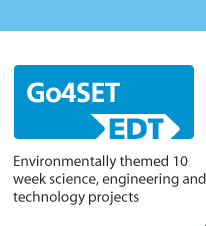Developing Critical Thinking Skills in STEM Education
In the rapidly evolving world of STEM (Science, Technology, Engineering, and Mathematics) education, the cultivation of critical thinking skills is crucial. This article emphasizes the importance of fostering critical thinking skills in STEM education and provides practical strategies for educators, teachers, and instructional designers. By implementing these strategies, educators can empower students to become skilled problem solvers, innovative thinkers, and lifelong learners.
Furthermore, when it comes to academic assignments, such as research papers or term papers, students may seek affordable term papers services to assist them in managing their workload effectively. These services provide expert guidance and support, ensuring that students receive high-quality papers that meet their academic requirements.
Understanding Critical Thinking in STEM Education
To effectively develop critical thinking skills, it is essential to grasp the concept and significance of critical thinking in the context of STEM education.
Definition and components of critical thinking:
Define critical thinking and explore its essential components, such as analysis, evaluation, problem-solving, and logical reasoning. Provide examples of critical thinking in action to help educators understand its practical applications.
The role of critical thinking in STEM learning and application:
Highlight the integral role critical thinking plays in STEM education. Discuss how critical thinking enhances students' ability to analyze complex problems, identify patterns, make connections, and propose innovative solutions. Emphasize that critical thinking is a skill that transcends subject areas and is essential for success in the 21st-century workforce.
Benefits of developing critical thinking skills in students:
Illustrate the numerous benefits of nurturing critical thinking skills in students. Discuss how critical thinking fosters intellectual independence, creativity, resilience, and effective decision-making. Highlight the correlation between strong critical thinking skills and academic achievement in STEM disciplines.
Strategies for Developing Critical Thinking Skills in STEM Education
Equipping students with critical thinking skills requires deliberate instructional strategies that promote inquiry, creativity, and problem-solving.
Encouraging inquiry-based learning and problem-solving:
Advocate for inquiry-based learning approaches that encourage students to ask questions, investigate, and explore. Provide opportunities for hands-on experiments, research projects, and collaborative problem-solving activities. Foster an environment that values curiosity, experimentation, and the exploration of multiple solutions.
Promoting open-ended questions and divergent thinking:
Encourage the use of open-ended questions that stimulate critical thinking. These questions prompt students to think deeply, consider different perspectives, and develop their own ideas. Encourage divergent thinking by promoting the generation of multiple solutions and creative approaches to problem-solving.
Integrating real-world challenges and authentic projects:
Connect STEM learning to real-world challenges and authentic projects that require critical thinking. Engage students in solving authentic problems, designing prototypes, and creating solutions that have practical applications. Provide opportunities for interdisciplinary collaboration and exposure to STEM careers to make learning relevant and meaningful.
Assessing and Nurturing Critical Thinking Skills in STEM Education
To support the growth of critical thinking skills, educators must implement effective assessment methods and provide constructive feedback.
Designing effective assessment methods for critical thinking:
Develop assessment strategies that align with the goals of critical thinking development. Incorporate performance-based assessments, project-based assessments, and rubrics that evaluate students' abilities to analyze, evaluate, and solve problems. Provide clear criteria and expectations to guide students' critical thinking processes.
Providing constructive feedback to foster critical thinking:
Offer specific and constructive feedback that supports students' critical thinking growth. Focus on the process rather than just the outcome, highlighting strengths and areas for improvement. Encourage reflection, metacognition, and self-assessment to help students develop a deeper understanding of their own thinking processes.
Conclusion:
By prioritizing the development of critical thinking skills in STEM education, educators can empower students to become confident problem solvers and innovative thinkers. Through an understanding of critical thinking, implementation of effective strategies, and thoughtful assessment and feedback, educators can foster a generation of students equipped with the skills necessary for success in an ever-evolving world. Let us embrace the power of critical thinking and inspire the next generation of STEM leaders.
|





